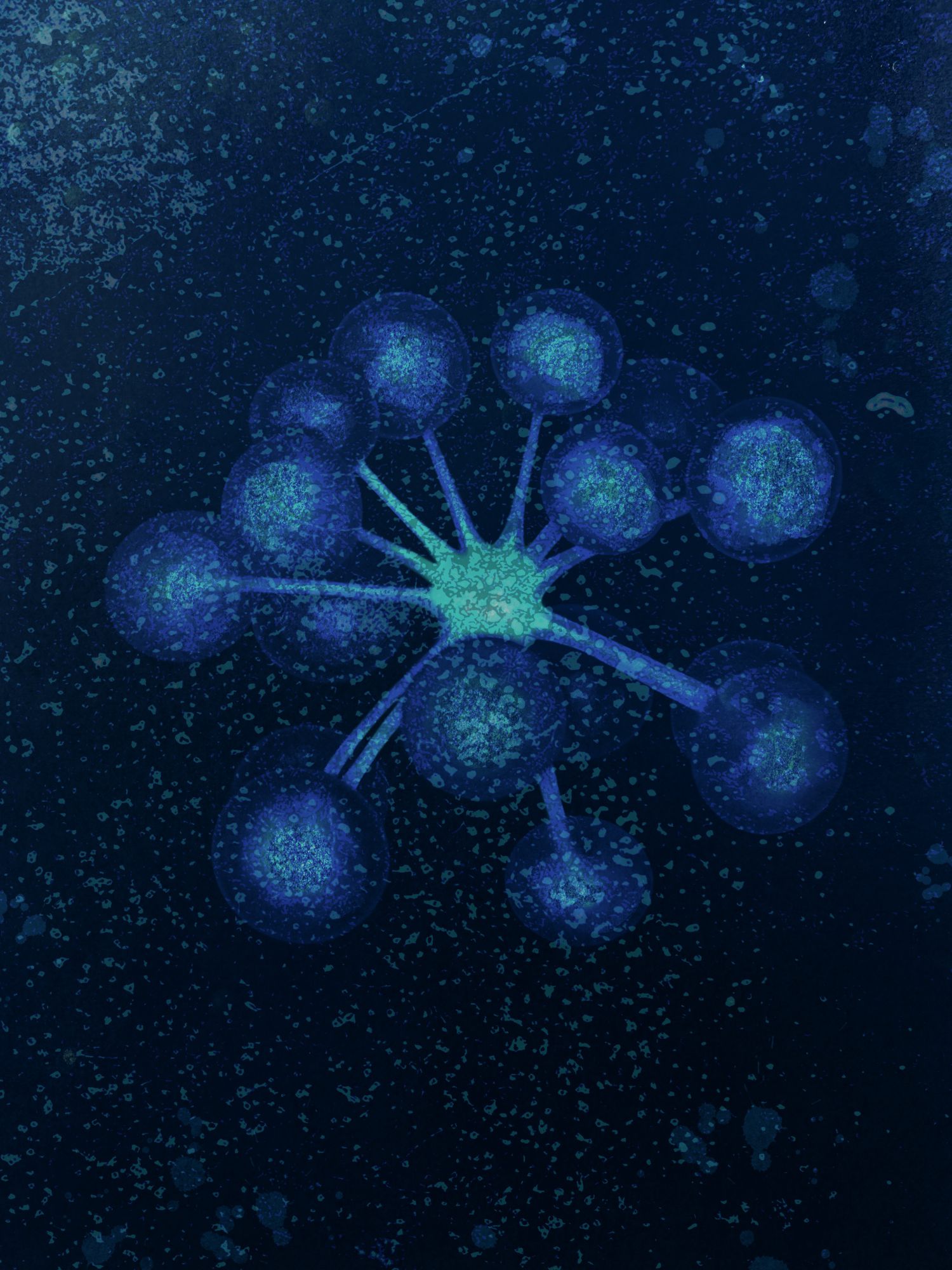Bioluminescence
There is unexpected light to be found in the vast darkness of the deep sea. A wide range of marine organisms, from bacteria to fishes, use bioluminescence. While some of them use bacterial symbionts to produce luminescence, most of those organisms shine their own light in the middle of the blackness. Bioluminescence has evolved independently, and is used for various purposes, including reproduction, defense, camouflage by counter-illumination, mimicry, warning, communication, or simply illumination, in order to find their prey. Even the light-producing chemical reactions differ between organisms. While mostly a luciferin (light emitting pigment) and a luciferase (enzyme) are involved, some organisms make use of a photoprotein.
This series shows seven different species: giant isopod, giant squid, chondrocladia sponge, sea feather, boungainvillia superciliaris jellyfish, sea squirt, and osedax worm. It highlights the diversity, and at the same time commonalities, of these creatures of the deep sea. Techniques used were monotype, cyanotype, and digital drawing.
Sources: Haddock, Steven H.D., Mark A. Moline and James F. Case, “Bioluminescence in the Sea”, Moss Landing, (2010).
